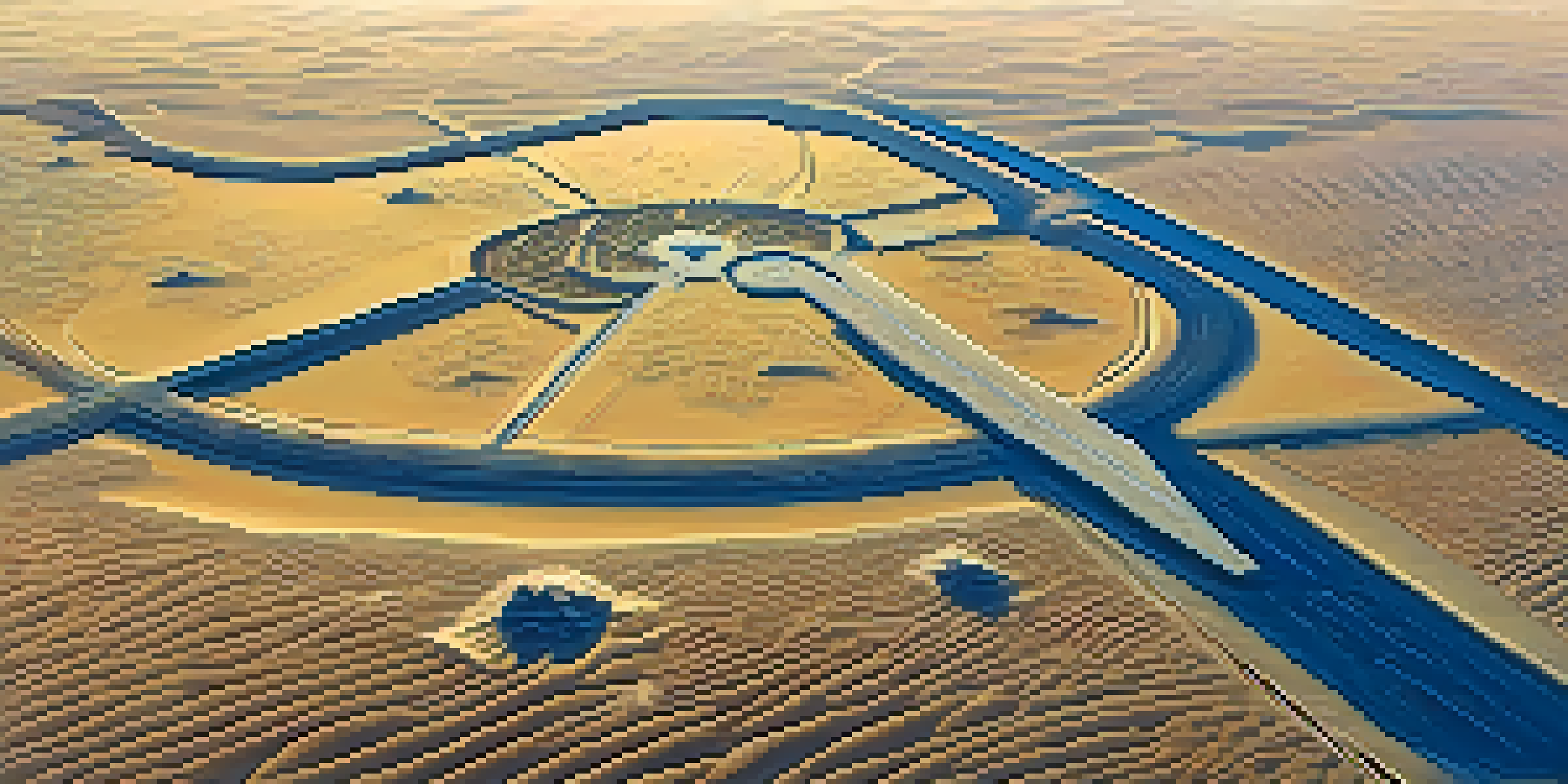Nazca Lines: Astronomical Alignments and Their Spiritual Role

Introduction to the Mysteries of the Nazca Lines
The Nazca Lines, etched into the arid plains of southern Peru, have fascinated researchers and tourists alike for decades. These massive geoglyphs depict various animals, plants, and shapes, some stretching over 1,200 feet in length. While their purpose remains largely a mystery, many believe they serve significant astronomical and spiritual roles.
The lines are a testament to the enduring human spirit and our quest for meaning in a vast, complex universe.
Dating back to between 500 BC and 500 AD, the Nazca civilization created these lines, but the reasons behind their construction are still debated. Some theories suggest they were created for astronomical observations, while others propose a deeper spiritual significance linked to their culture's beliefs.
As we delve into the astronomical alignments and the spiritual roles of these lines, we uncover layers of meaning that connect ancient practices with the cosmos. Understanding these connections can provide us with insights into the minds of the Nazca people and their relationship with the universe.
Astronomical Alignments: A Celestial Connection
One of the most compelling aspects of the Nazca Lines is their alignment with celestial bodies. Many of the geoglyphs correspond to the positions of the sun, moon, and stars during solstices and equinoxes. This alignment suggests that the Nazca people may have used these lines as a form of astronomical calendar, helping them track seasonal changes.

For example, the famous hummingbird geoglyph is believed to align with the position of the sun during the solstice, indicating its importance in agricultural cycles. This celestial connection would have been vital for a civilization reliant on farming, as it helped them determine the best times for planting and harvesting.
Astronomical Alignments Revealed
The Nazca Lines align with celestial bodies, suggesting they served as an astronomical calendar for agricultural practices.
By understanding these astronomical alignments, we gain insight into how the Nazca people viewed their world, intertwining their agricultural practices with cosmic events. This blend of science and spirituality reflects a holistic approach to life that resonates even today.
The Spiritual Significance of the Nazca Lines
Beyond their astronomical functions, the Nazca Lines are also thought to hold profound spiritual meanings. Many researchers argue that these geoglyphs may have been created as offerings to the gods or as part of rituals intended to ensure fertility and prosperity. The lines could have served as pathways for spiritual journeys, guiding the Nazca people in their quest for divine favor.
By studying these ancient creations, we not only learn about the past but also reflect on our own relationship with nature and the universe.
Some lines are believed to point towards water sources, which were crucial in the arid landscape of Nazca. This connection to water highlights the importance of life-giving elements in their spiritual practices, suggesting that the lines were more than mere artworks; they were vital to their survival.
The intertwining of spirituality and practicality in the Nazca Lines illustrates a culture deeply connected to their environment. By navigating both the physical and spiritual realms, the Nazca people created a legacy that continues to inspire awe and curiosity.
Cultural Practices and Rituals Associated with the Lines
The creation of the Nazca Lines likely involved communal efforts that reflected the social structure and cultural practices of the Nazca civilization. Evidence suggests that these massive projects were undertaken as part of group rituals, emphasizing community collaboration and shared beliefs. This collective effort would have reinforced social ties and a sense of purpose among the Nazca people.
Rituals may have included processions along the lines, possibly as a form of worship or celebration of celestial events. Such practices could have served to strengthen the connection between the people and their deities, as well as to foster a sense of belonging within the community.
Spiritual Significance Explored
The geoglyphs likely held deep spiritual meanings, possibly acting as offerings to the gods and pathways for rituals.
By examining these cultural practices, we can appreciate the lines not just as historical artifacts, but as vital expressions of the Nazca people's beliefs and values. They remind us that spirituality can manifest in communal activities that bring people together.
Modern Interpretations and Theories
In contemporary times, the Nazca Lines have sparked a variety of interpretations and theories, reflecting our ongoing fascination with these ancient creations. Some researchers propose that the lines may have served as a form of astronomical map, while others suggest they were part of a larger network of sacred sites. Each theory adds another layer to our understanding of the Nazca culture.
Additionally, modern technology, such as satellite imagery and aerial photography, has allowed us to discover new geoglyphs, further expanding our knowledge and appreciation of the Nazca Lines. These advancements have opened up fresh inquiries into their purpose and significance, allowing for a more comprehensive view of Nazca society.
As we explore these modern interpretations, we see how the Nazca Lines continue to inspire curiosity and debate. They serve as a bridge between the past and present, inviting us to ponder the mysteries of human creativity and spirituality.
The Impact of Tourism on the Nazca Lines
Tourism has become a double-edged sword for the Nazca Lines, providing both economic benefits and challenges. The influx of visitors eager to witness these wonders has brought much-needed revenue to the local community, allowing for preservation efforts and increased awareness of the site's significance. However, the environmental impact of tourism raises concerns about the long-term sustainability of the lines.
As more people flock to see the Nazca Lines, it becomes crucial to balance tourism with conservation. Efforts are being made to educate visitors on the importance of respecting the site and minimizing their footprint. Tour operators are encouraged to promote responsible tourism that prioritizes the preservation of these ancient geoglyphs.
Tourism's Impact on Preservation
While tourism boosts local economies, it also poses challenges for the long-term conservation of the Nazca Lines.
By fostering a culture of respect and awareness around the Nazca Lines, we can ensure that future generations can appreciate their beauty and significance. This delicate balance between tourism and preservation reflects our responsibility to protect cultural heritage.
Conclusion: Embracing the Legacy of the Nazca Lines
The Nazca Lines are more than just ancient geoglyphs; they represent a rich tapestry of astronomical knowledge, spiritual beliefs, and cultural practices. As we explore their meanings, we gain insight into the lives of the Nazca people and their deep connection to the cosmos. These lines continue to captivate our imagination, reminding us of the power of human creativity.
In embracing the legacy of the Nazca Lines, we acknowledge the importance of understanding our history and the cultures that shaped our world. By studying these ancient creations, we not only learn about the past but also reflect on our own relationship with nature and the universe.

As we move forward, let us carry the lessons of the Nazca Lines with us, fostering a sense of wonder and respect for the mysteries that surround us. After all, the lines are a testament to the enduring human spirit and our quest for meaning in a vast, complex universe.